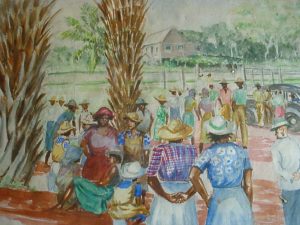By Clive W. McWatt
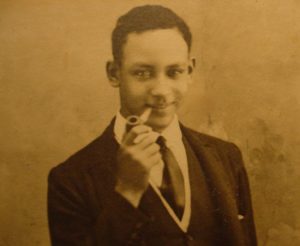
Richard Gui Pennington Sharples, better known as R. G. Sharples, was a man of extraordinary ability who demonstrated a wealth of talents. Alongside his legal career, Sharples is recognised equally for his artistic legacy and his contribution to the development of a ‘local style’ in the history of fine art in Guyana.
Sharples was born in Georgetown on May 1, 1906. He was the youngest son of Mary Johanna (née Scott) and John Bradshaw Sharples, the famous architect and builder.
He began his early education at the Ursuline Convent and Queen’s College. He later studied law in London.
On his return to Guyana, he practised as a solicitor. He became Treasurer of the British Guiana Law Society in 1943. Sharples’ career as a Magistrate became inextricably linked with Guyana’s political history.
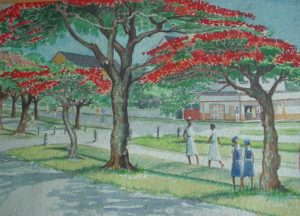
Sharples became president of the British Guiana Arts & Crafts Society, formed in 1931, which later becamethe Guyanese Art Group in 1945. He was actively involved in the main current of art in those decades. His art circle included a nucleus of talented local artists like Vivian Antrobus, Reginald Phang, E. R. Burrowes, Basil Hinds, Denis Williams and Hubert Moshett, who worked primarily in landscape and portraiture.
The art group set out to foster the appreciation of art and set goals for assisting the young upcoming generation of artists who later pursued their art studies in Europe: Aubrey Williams, Stanley Greaves, and Marjorie Broodhagen, along with Burrowes.
Sharples was also a member of the RA&CS Exhibition Committee up to 1956.
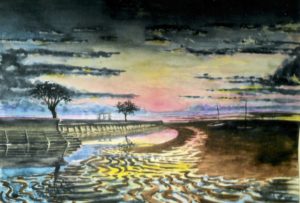
© C W McWatt
From an early age, Sharples displayed a flair for painting and continued his hobby when he returned to Guyana after law studies in England. His sheer spontaneity is expressed in his pencil sketching done in situto producea finished watercolour painting.This technique became his preferred medium of expression.
His subject matter was primarily scenery with trees and human figures. Trees became an important feature in all his watercolour landscapes – sturdy gnarled trunks crowned with feathery foliage and lithe abstract figures conveying a sense of belonging to the landscapes in which they appear.
Some of Sharples’ earliest work appeared in the “Centenary History and Handbook of British Guiana 1831-1931” by A.R.F. Webber published in 1931. The watercolour plates he produced for the book brought Sharples’ name to prominence. The six watercolour plates vividly portray local themes and locations which are evocative of Guyana’s coastal topography – the wonderful opalescent atmosphere of the tropical landscape is captured in scenes with ordinary men and women working amidst lush green foliage and scarlet blooms; reflected light from azure skies on waterways and rivers.
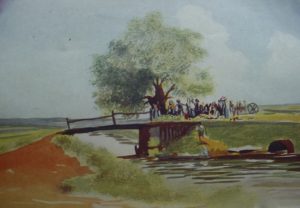
Besides his watercolour painting, Sharples readily turned his creative skills to other design activities included hand-painted dresses for his wife and daughters.
In the mid-1940s he paintedthe scenery on the pivoting panels of the stage wings in the auditorium at the Ursuline Convent; he also made and painted the large ‘SERVIAM’ shield (the emblem and motto of St Rose’s High School) which hung at the back of the auditorium.
Rev. Richard Lester Guilly, S.J. was appointed Catholic Bishop of Georgetown in February 1956; Sharples wasasked to design a coat of arms for the newly enthroned Bishop.
In the early 1950s, Sharples won astamp design competition. One of the chosendesigns was the 72 cents stamp in a carmine and emerald illustration of the Arapaima fish. This 1954 stamp set, released on December 1, 1954 was the first British Guiana stamp to carry the profile of Queen Elizabeth II.
